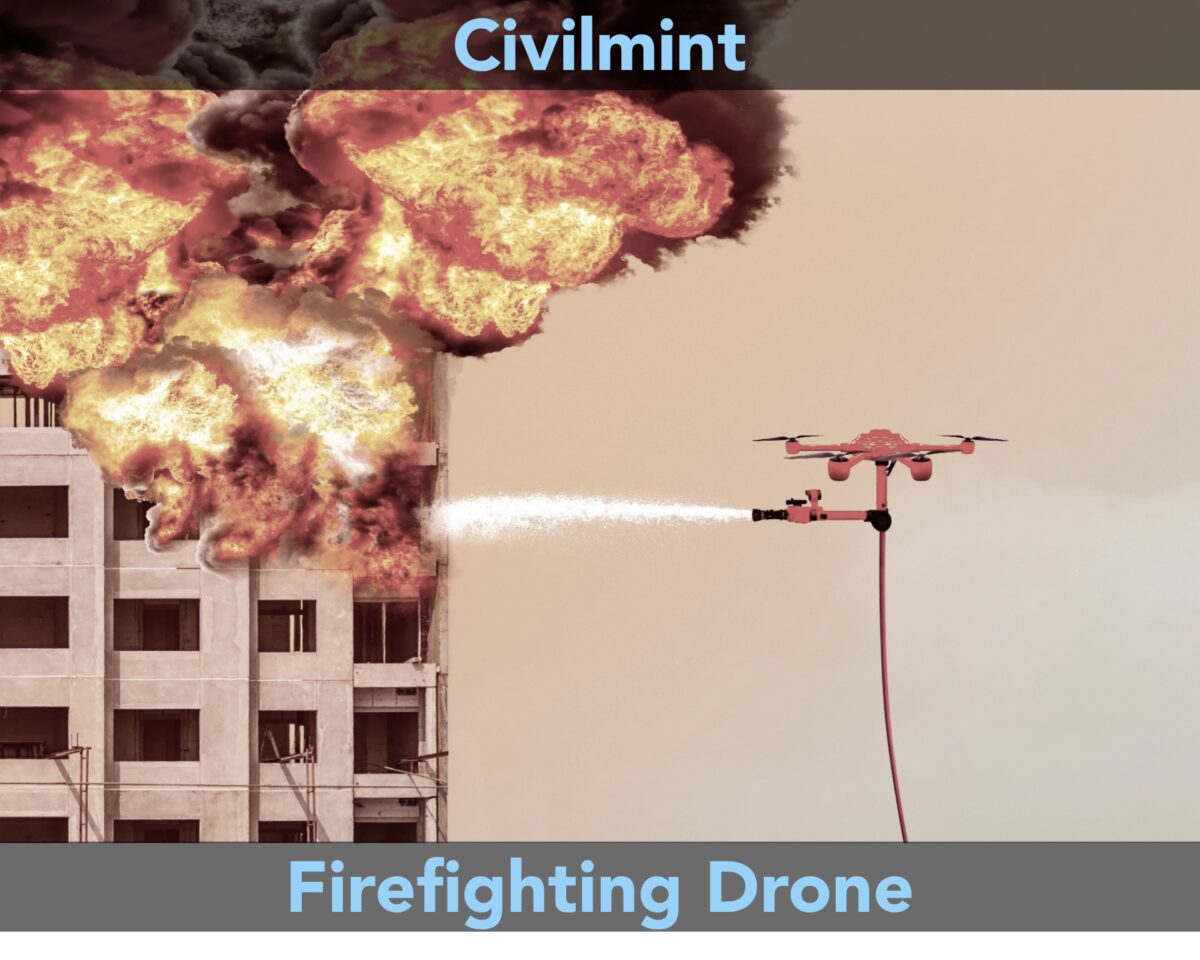Firefighting Drones have emerged as a new and vital tool in the battle against devastating wildfires. These unmanned aerial vehicles (UAVs) are revolutionizing firefighting by utilizing cutting-edge technology to enhance situational awareness, improve safety, and optimize operational efficiency.

Table of Contents
Introduction
Fires worldwide cause immense destruction each year, resulting in loss of life, environmental devastation, and ruined communities. The urgent need for innovative solutions is clear, as millions of fires continue to wreak havoc on the landscape, emphasizing the importance of addressing this crisis.
This article explores the essential role played by drones in firefighting, highlighting their numerous advantages, success stories, and top models available. From enhancing response times and reducing costs to ensuring the safety of firefighters and civilians, these aerial marvels are reshaping the approach to combating wildfires.
Working Concept
- Detection and Monitoring:
- Firefighting drones are equipped with advanced sensors, including infrared cameras and gas detectors, which enable them to detect fires even in the early stages when human eyes might not spot them.
- These drones can cover vast areas quickly, monitoring for signs of smoke, heat, or gas emissions that could indicate a fire.
- Communication and Coordination:
- Once a fire is detected, the drone establishes a communication link with the central command or firefighting teams on the ground.
- Real-time data and imagery are transmitted to the command center, allowing for informed decision-making.
- Navigation and Autonomy:
- Firefighting drones often employ GPS and autonomous navigation systems to fly precisely to the fire’s location.
- They can navigate through challenging terrain, including forests, mountains, or urban areas, using obstacle detection and avoidance algorithms.
- Fire Suppression Tools:
- Firefighting drones carry an array of tools for fire suppression. These tools can vary, but they typically include:
- Water Delivery: Some drones are equipped with water tanks and pumps to drop water directly onto the fire.
- Fire Retardants: Drones can release fire retardant chemicals to slow down the fire’s progress.
- Firebreak Creation: Specialized drones may be equipped with equipment to create firebreaks by cutting down vegetation or starting controlled burns.
- Firefighting drones carry an array of tools for fire suppression. These tools can vary, but they typically include:
- Aerial Support:
- Drones can provide a bird’s-eye view of the fire, helping firefighters understand its behavior and plan their strategies.
- Thermal imaging cameras can identify hotspots and areas of concern.
- Rescue Operations:
- In addition to fire suppression, some firefighting drones are equipped with thermal cameras and payloads like lifebuoys, enabling them to locate and assist people trapped in hazardous areas.
- Batteries and Flight Time:
- Battery technology is crucial for firefighting drones. Extended flight times are necessary for covering large areas and monitoring the situation for extended periods.
- Communication Relay:
- In remote areas where communication infrastructure is limited, firefighting drones can act as communication relays, extending the reach of emergency services.
- Safety Measures:
- These drones often have redundant systems and fail-safes to ensure safe operation in challenging conditions.
- Weather monitoring and wind resistance capabilities are integrated to adapt to changing environmental conditions.
- Data Analysis:
- Beyond the immediate response, firefighting drones can collect valuable data for post-incident analysis, helping improve future firefighting strategies and techniques.
Advantages of Firefighting Drones
- Enhanced Safety: Firefighting drones keep firefighters out of harm’s way by assessing fires from a safe distance.
- Rapid Response: Drones can reach fire scenes swiftly, often faster than traditional firefighting vehicles, reducing the spread of flames.
- Improved Visibility: Equipped with powerful lights, drones illuminate dark areas, providing better visibility for firefighting operations.
- Spotting Fire Spread: Drones excel at detecting potential fire spread, assisting in planning and safety measures.
- Lifesaving Abilities: Drones are effective at locating people in danger and delivering essential supplies like water and food.
- Precision Resource Delivery: Drones drop resources precisely where needed, reducing waste and minimizing collateral damage.
- Cost-Effective: Firefighting drones offer a cost-efficient solution, helping firefighting departments save money.
Disadvantages of Firefighting Drones
- Challenging Operation: Operating drones can be difficult, especially in adverse weather conditions, requiring specialized training.
- Regulatory Hurdles: Drones require approval from the FAA, which may lead to delays in emergency situations.
- Accuracy Concerns: Drones may not always accurately drop water or resources on target, potentially wasting resources.
- Risk of Accidents: Drones can crash, potentially exacerbating fires or causing property damage.
Wrap Up!
In recent times, developers have introduced innovative types of intelligent drones capable of functioning in three distinct phases: before, during, and after a fire outbreak.
The heightened risk of wildfires in regions characterized by dense vegetation and periods of elevated temperatures, such as Galicia, Extremadura, and Andalusia, has prompted public administrations to extend their fire prevention initiatives year-round, instead of concentrating solely on the most perilous months. This extension arises from the severe human, animal, and environmental consequences that wildfires can inflict.
Read this: Search And Rescue Drones
It is imperative for all individuals to shoulder the responsibility of combatting this menace, as over 90% of wildfires stem from human activities, whether directly or indirectly. Fortunately, technology has emerged as a valuable ally in tackling this crisis. Thanks to the Internet of Things (IoT), developers have engineered intelligent drones that assume a vital role in addressing wildfires across their entire lifecycle.
